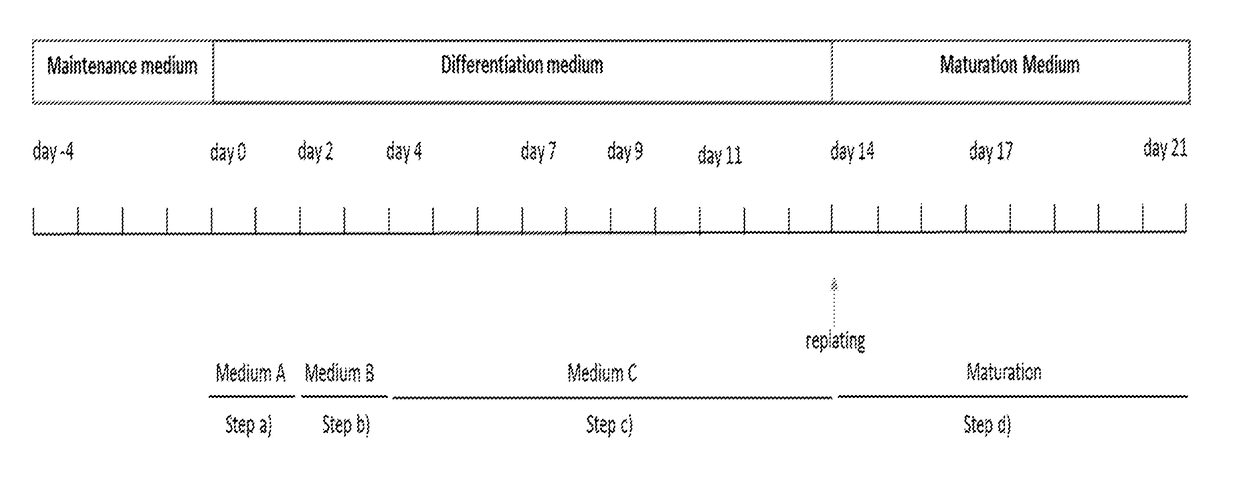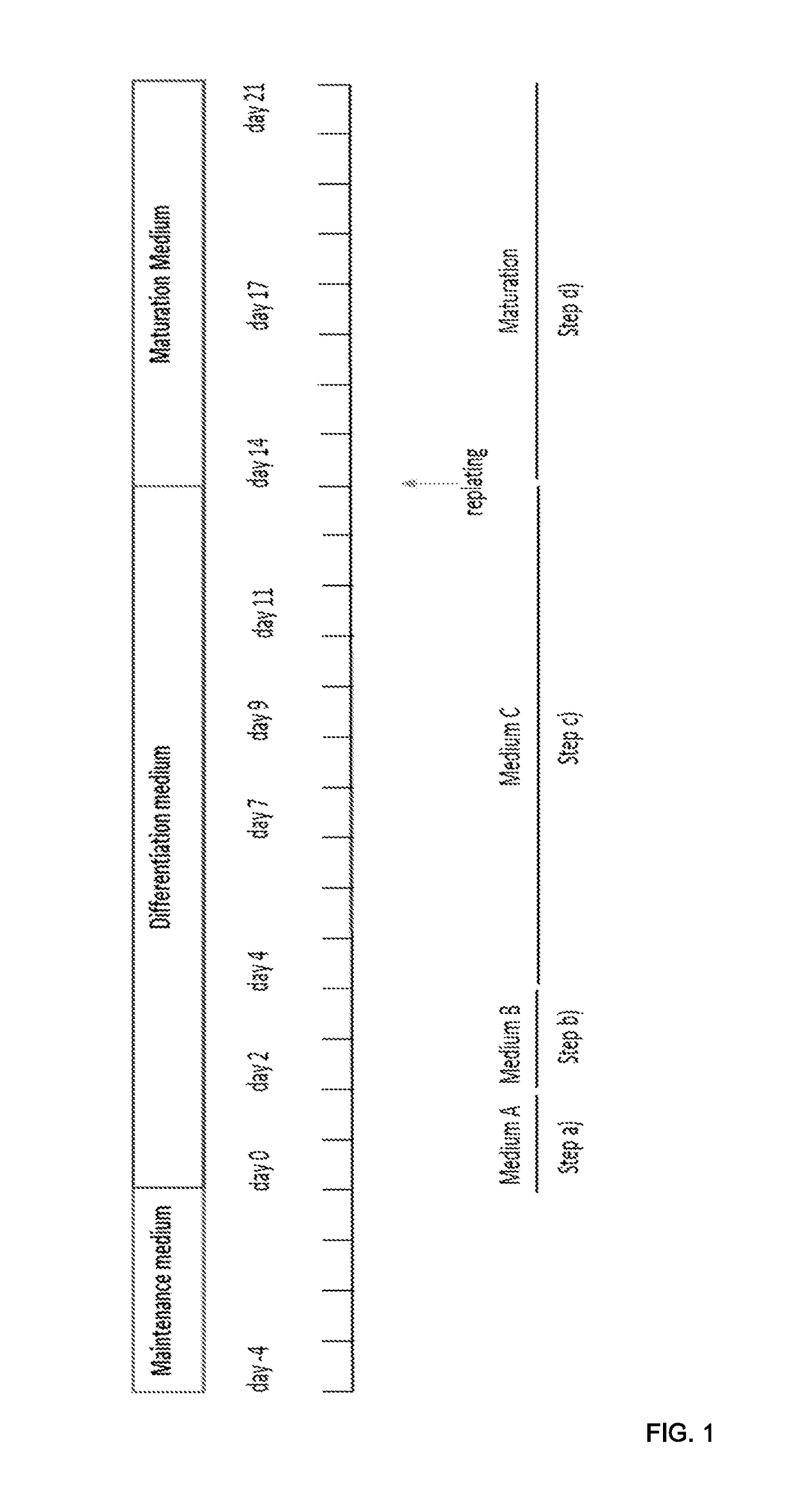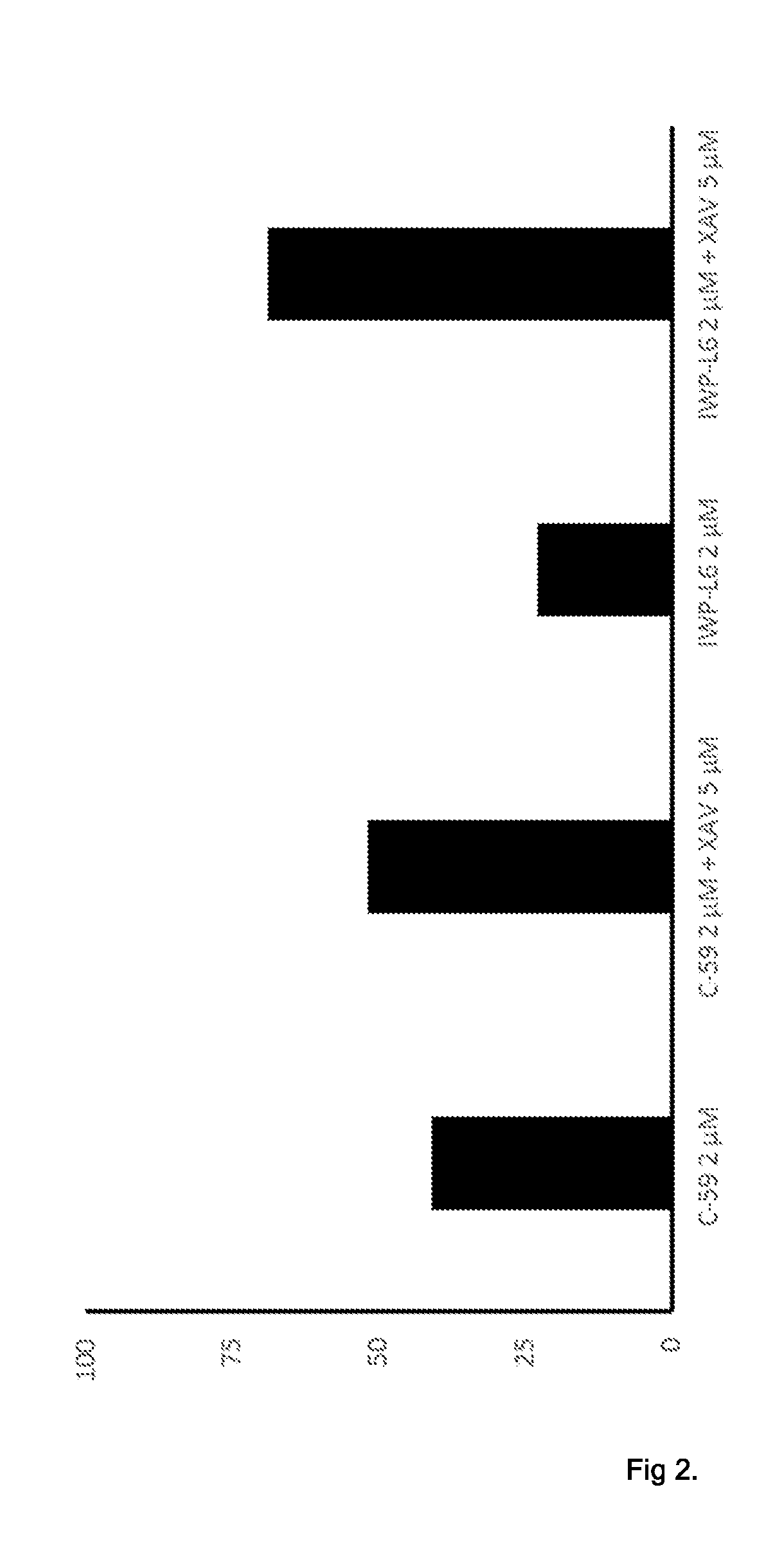An in vitro method of differentiating a human pluripotent stem cell population into a cardiomyocyte cell population
- Summary
- Abstract
- Description
- Claims
- Application Information
AI Technical Summary
Benefits of technology
Problems solved by technology
Method used
Image
Examples
examples
Method of Culturing the Cells
[0159]Human Pluripotent stem cells (hPSC) were cultured on feeders (mouse embryonic fibroblasts) with DMEM / F-12, GlutaMAX medium supplemented with 20% Knockout™ Serum Replacement, 1% NEAA, 10 ng / ml b-FGF, and 0.1 mM β-mercaptoethanol or under feeder-free conditions using Essential 8TM Medium (Life Technologies) on vitronectin (VTN-N) coated plates according to the manufacturer's instructions, or using L7 culture system (Lonza) according to manufacturer's instructions. Cells were routinely passaged using Accutase (Sigma-Aldrich) in case of feeder cultures or using 0.5 mM EDTA for E8 cultures or using L7 passaging solution in case of the L7 culture system. The cell cultures were maintained in a humidified incubator at 37° C. with 5% CO2. See, for example, http: / / hpscreg.eu / cell-line / CRMi003-A for NCRM-1 cells.
Methods for Differentiation
[0160]For differentiation, cells were seeded in 12-well plates at density of 60,000 cells per well or a split ratio that w...
PUM
 Login to View More
Login to View More Abstract
Description
Claims
Application Information
 Login to View More
Login to View More - R&D
- Intellectual Property
- Life Sciences
- Materials
- Tech Scout
- Unparalleled Data Quality
- Higher Quality Content
- 60% Fewer Hallucinations
Browse by: Latest US Patents, China's latest patents, Technical Efficacy Thesaurus, Application Domain, Technology Topic, Popular Technical Reports.
© 2025 PatSnap. All rights reserved.Legal|Privacy policy|Modern Slavery Act Transparency Statement|Sitemap|About US| Contact US: help@patsnap.com



